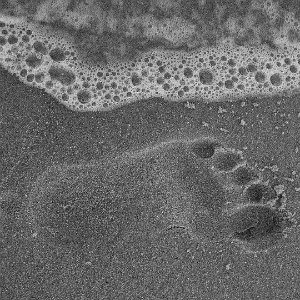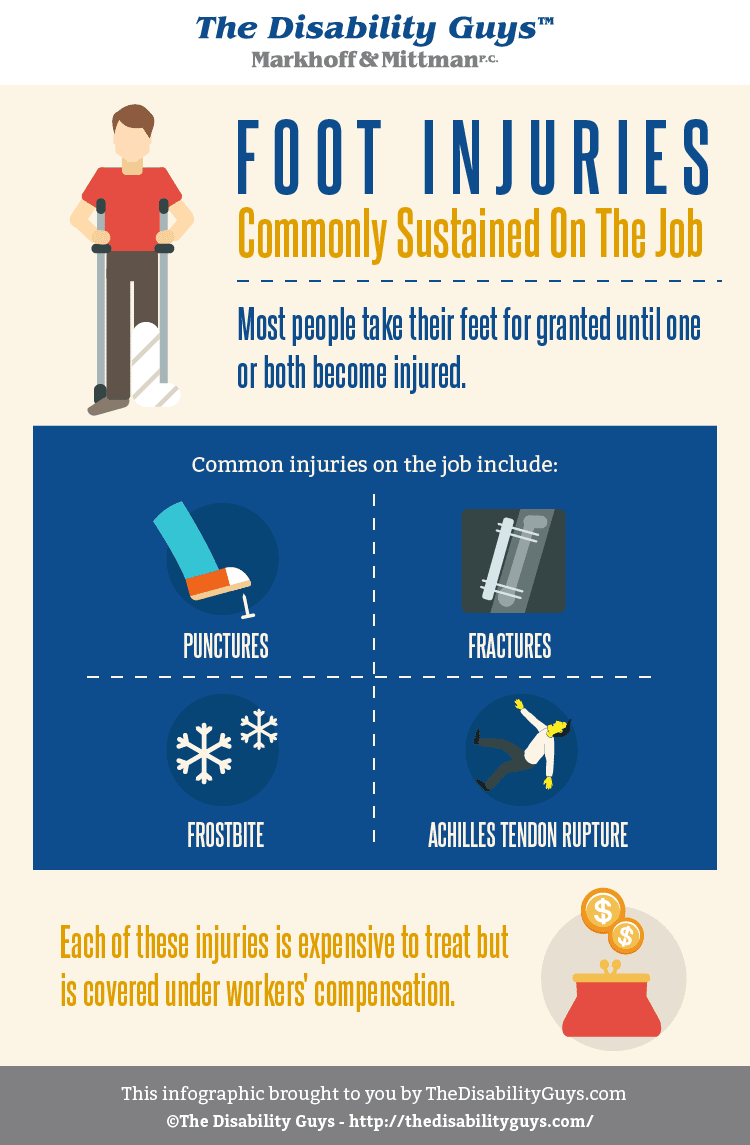The foot is a part of the body that many people take for granted. Most Americans are able to get up every morning, put their feet on the floor, and use them to get to where they need to be that day. But for many, things just aren’t that simple because they sustained a foot or ankle injury while on the job.
The Most Common Injuries Sustained
It’s amazing how complicated the anatomy of the foot actually is. There are 26 bones in the human foot, 33 joints, and over 100 muscles, tendons, and ligaments, not to mention the blood vessels, soft tissue, and skin that surrounds these structures. Every single one of these parts has the potential to become injured.
Achilles Tendon Rupture
Most people have heard of the Achilles tendon, but don’t realize how important this muscle is for everyday activities. The tendon runs all the way from the heel bone into the back of the calf. When ruptured, a worker will feel a snap and then will likely not be able to walk properly on the leg.
It can take something as small as a misstep on an uneven surface to cause a rupture or if the worker lands on their feet in a sudden fall.
Fractures
Any time that a bone is fractured, no matter how small, it can mean months of recovery time and even surgical repair. Falls, being struck by a falling object, and being hit by heavy machinery or a vehicle are all common ways in which bones are broken.
Stress Fracture
Stress fractures can occur in the foot due to overuse and repetitive motions. Basically, because bone is always in the process of “remodeling”, where the body develops new bone, the repetitive motions cause wear faster than the body can replace it.
Lisfranc Injury
Also known as a midfoot injury, damage is done to the bones, tendons, and ligaments in the middle region of the foot. A fall can easily result in this type of injury and often physically dislocates the bones.
Frostbite
If a worker is exposed to extremely cold temperatures and is not wearing the appropriate warming gear, it only takes a few minutes for frostbite to occur. Superficial frostbite impacts only the skin but deep frostbite can damage the tissue below. In extreme cases, toes and other parts of the foot need to be amputated.
The average American worker who is diagnosed with a foot injury needs to take 26 days away from work. If the employee doesn’t seek immediate medical attention, this can easily result in the need for additional medical procedures and time away from work.
I Can’t Afford To Take Time Off Of Work
For most, when they are told that they won’t be able to return to work for an extended period of time, panic sets in. Medical bills are likely already piling up and the thought that an income won’t be available for a month or more is very distressing.
Thankfully, this is the very reason why workers’ compensation insurance exists.
Workers’ Compensation Claims
In the majority of all cases, whenever a worker is injured on the job, regardless of whose fault it is, they are eligible to file a workers’ compensation claim. This claim has two purposes:
- To ensure that the injured or ill employee is taken care of. The benefits offered through workers compensation are supposed to keep an employee financially safe and to provide the medical care needed to recover.
- To protect the employer. When a workers’ compensation claim is filed, the employee is prevented from filing a personal injury lawsuit against their employer.
It may sound like a simple thing to apply for workers’ compensation if all you have to do is fill out a few forms, what could possibly go wrong? Sadly, workers’ compensation claims can be shockingly complex and can add additional stress to an already stressful situation. This is why it is vitally important to speak with a workers’ compensation attorney.
Can An Attorney Really Help Me?
Yes, absolutely. If you consult with an attorney from the very beginning, your initial workers’ compensation claim is less likely to be denied. An attorney can:
- Go over every form and check it for mistakes.
- Speak with the insurance company on your behalf.
- Resolve any mistakes that are made if the amount being paid out by the insurance company is not correct.
- Determine why a claim was denied and file an appeal.
- Represent you at a hearing or on appeal.
- Secure the medical treatment you deserve.
- Review your case to determine if there are any other ways to legally obtain compensation.
Other Ways To Get The Compensation You Need
In many cases, it is possible to file for:
- Social Security Disability Benefits – if the injury that you sustained prevents you from returning to work permanently, these benefits can provide you with the monetary compensation you need to live.
- Personal Injury Lawsuit – If another party’s negligence was the cause of your injury, it may be possible to file a lawsuit against them to recover additional compensation. Not only can a lawsuit provide for medical expenses and lost wages, it can also compensate the plaintiff for their physical and emotional pain.
It is possible to file both of these claims and still seek benefits through workers compensation.


